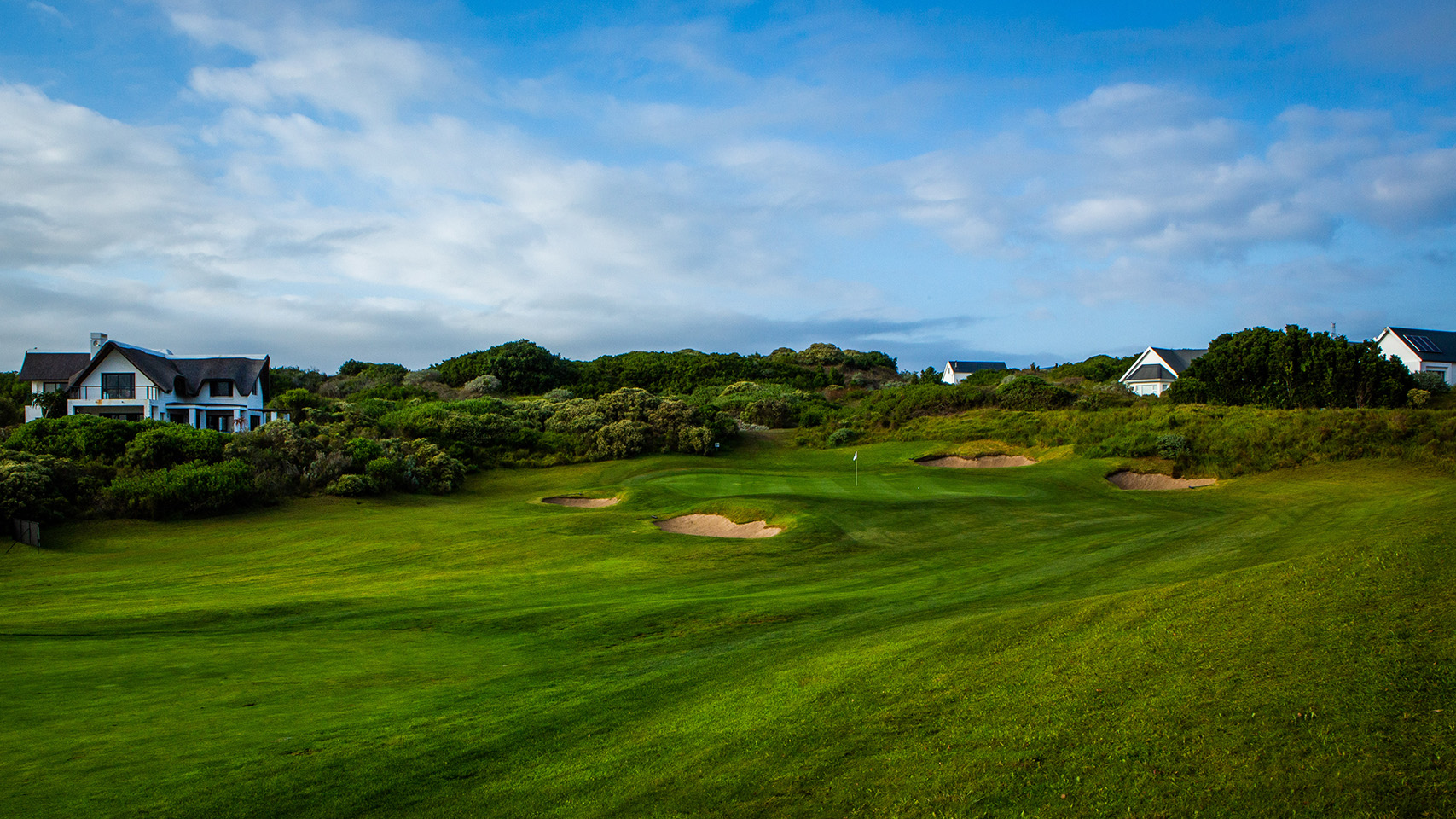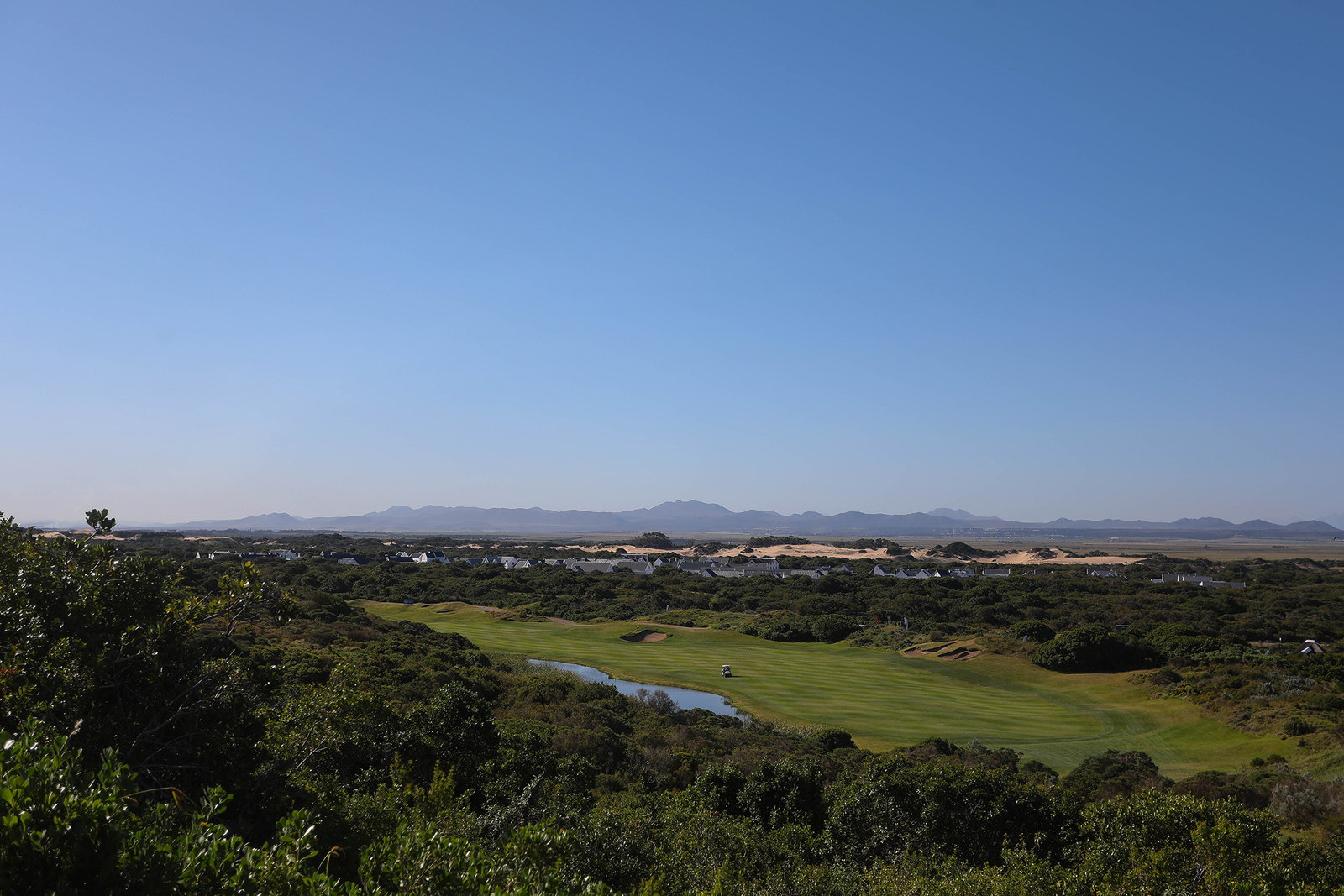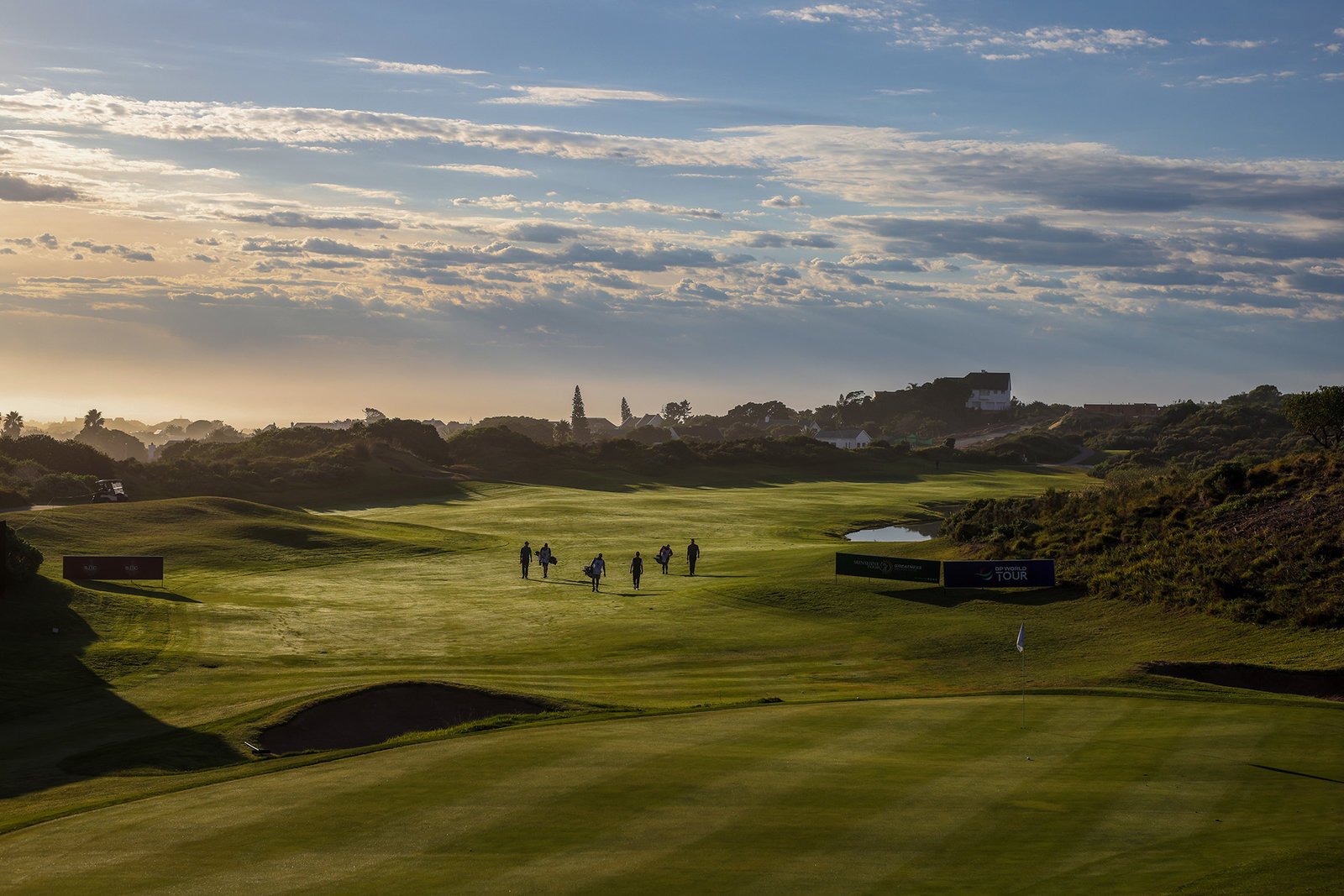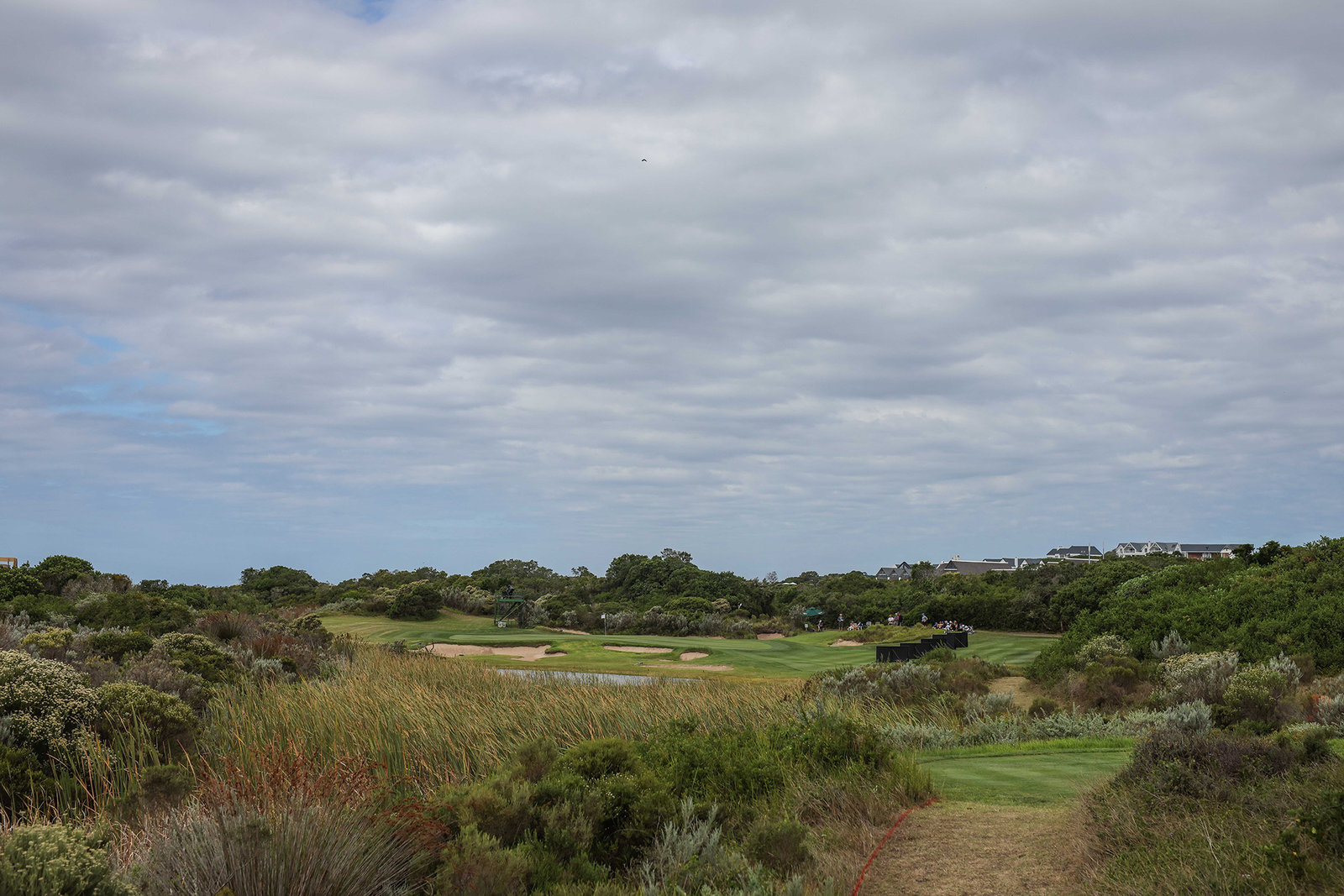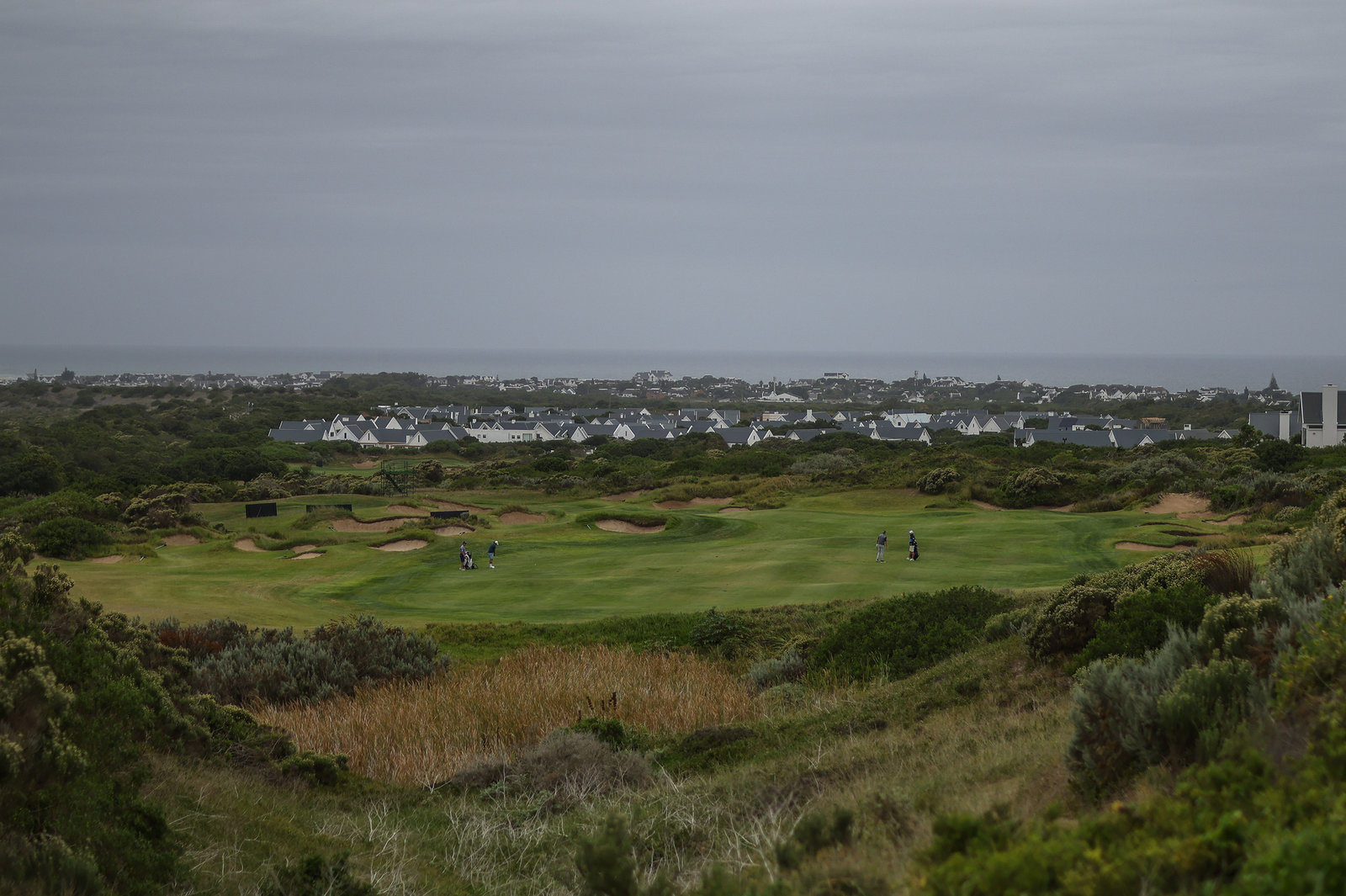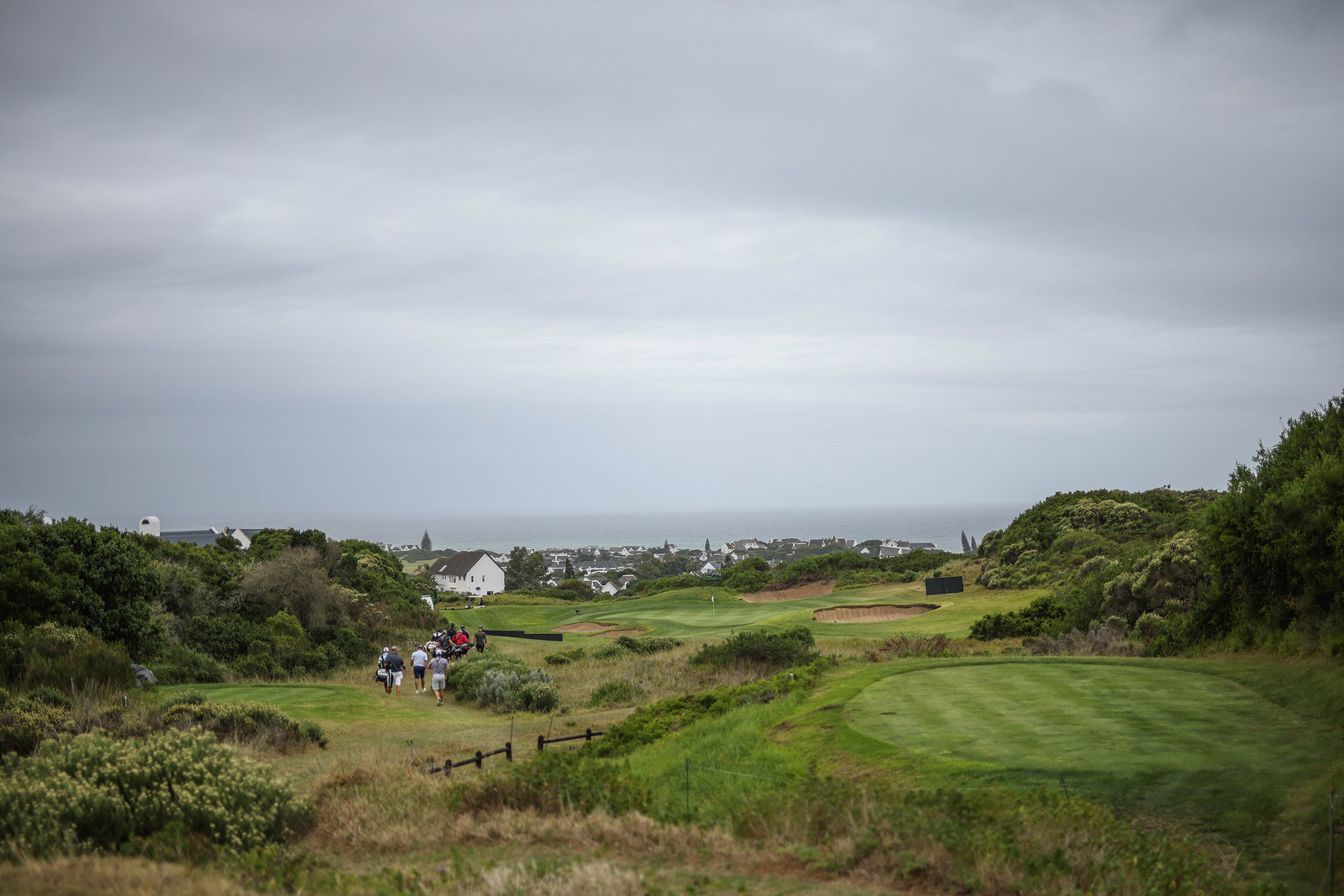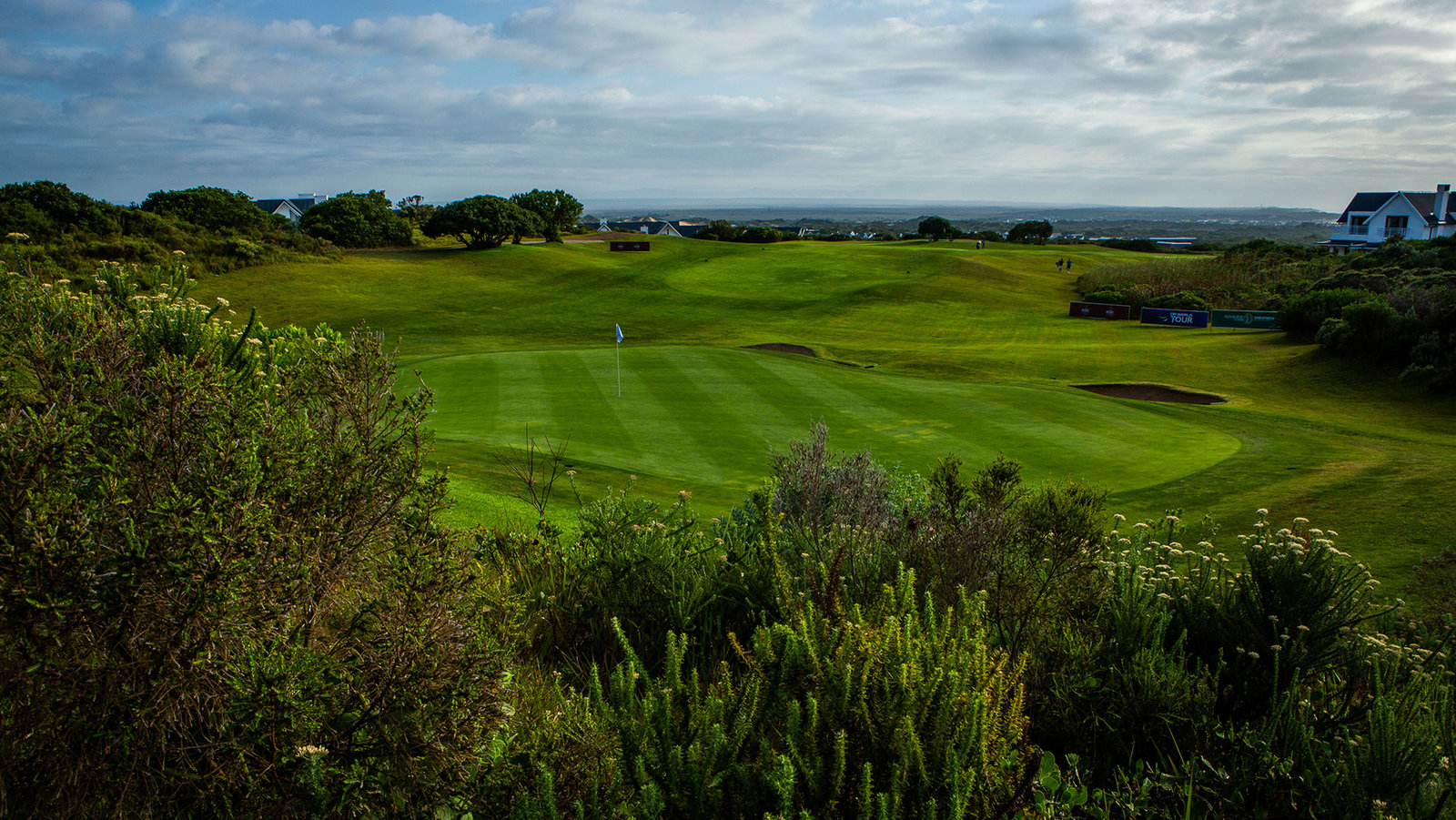It’s a Jack Nicklaus design, and the great man has suggested the Eastern Cape gem might just be the best course he has ever seen. It’s on magnificent dune land overlooking St Francis Bay, and, but for the lushness of the fairways, it looks like a genuine links course while giving players some of the advantages of playing on a receptive parkland layout. It may not have been grazing land for sheep and rabbits, but it is a natural course between the beach and arable land.
The Links falls within the amazing Cape Floral Kingdom, the smallest floral kingdom in the world yet the most diverse. So the course is unique with its own special plant species and wonderful splashes of colour throughout the year. There are about 9 000 plant species in the region and about half are threatened or of conservation concern. Invasive alien plants and too-frequent fires are the greatest management challenges facing this area. Longer-term threats include climate change and development pressures.
In a water-scarce area of the country, mitigating against those threats is a delicate balancing act: the stormwater system on the estate makes use of all run-off water as it gets pumped back to the dams. Additionally, the Cape Floral Kingdom, the fynbos, is naturally water-wise, so it is constantly renewing itself – each kind of plant at its own pace.
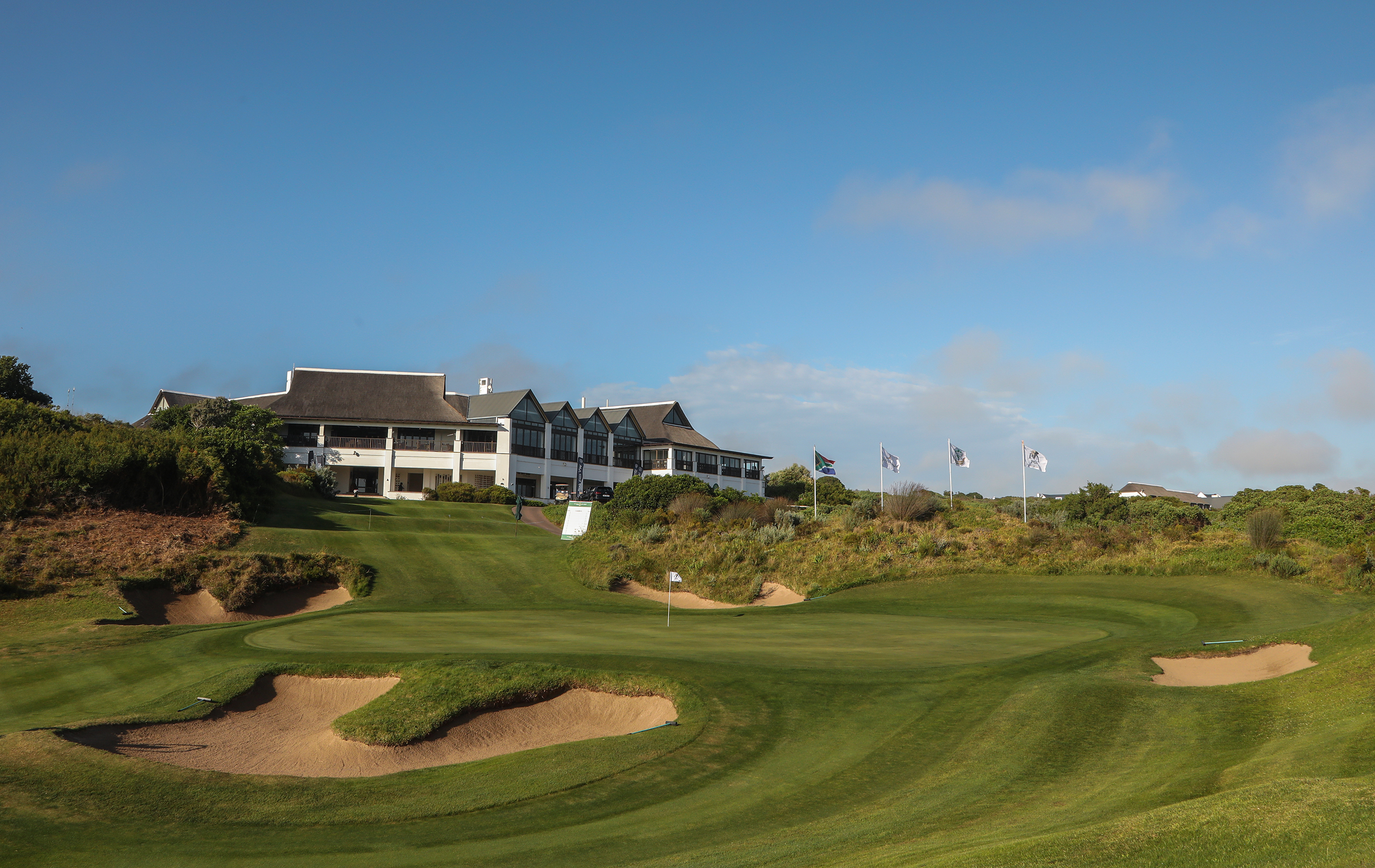
FACILITIES AND AMENITIES
Everything you need to know about what’s on offer at St Francis Links.

FACILITIES AND AMENITIES
- There is a 280m driving range with 20 hitting bays, bunkers and putting green, as well as target areas. Next to the clubhouse is one of the largest practice putting greens and chipping areas in the country of over 1 000m2.
- Lessons with the PGA professional team of head pro Norman Riley and with Christo Krugel may be booked in advance.
- There is a par-three course too, one of the first in the country: It's a way to encourage faster golf while improving your short game. The course even has its own scorecard.
- There are 45 electric golf carts with sweater baskets, cooler boxes, ball washers and club cleaners, sand bottles and Visage GPS. There are also 15 easy-to-push three-wheel trolleys available. Note: walking is popular but the club does not employ caddies.
- St Francis Links offers custom-built packages including golf (with or without accommodation), at a number of surrounding courses. Whether you are a touring group of four or 40, their golf co-ordinator can put together a tailored package to suit your dates and wishes.
- Open daily, the Lighthouse restaurant at the clubhouse caters for residents, facilities and visiting golfers or groups.
- The clubhouse also offers conference facilities and can accommodate corporate or individuals for meetings, team-building sessions, training, or any business services for up to 140 delegates. A boardroom for smaller meetings is also available.
- Unwind at the Bard’au & Co MediSpa with offerings including treatments by a physiotherapist and a beauty salon.
Visit www.stfrancislinks.com for more info and all contact details.
read more
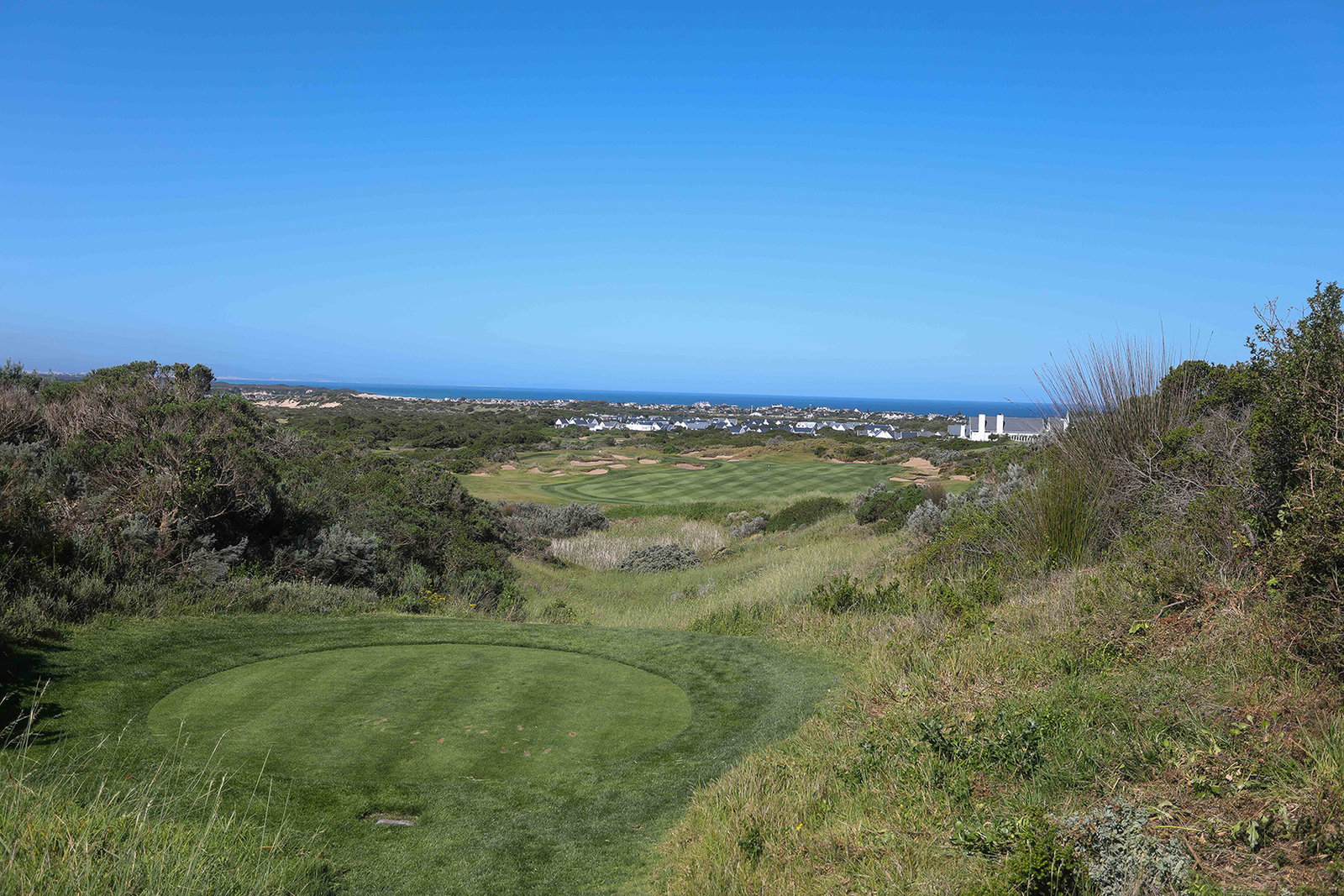
There is, of course, a degree of management required to keep St Francis looking like a golf course, but the original planning of the course took that kind of thing into account. So there is some cutting back of the fynbos at the edges of the course. But even that is done with the environment in mind, and management is promoting the natural Bermuda grasses to eventually take over the Rye grass on the fairways.
Assisting with that kind of thing is Caryl Logie, who has been with St Francis Links since the construction period and assists with everything that grows (and eliminating stuff that shouldn’t be growing). She has created brilliant signage with descriptions of what you find on the estate, and, if your round is not going so well, you can learn a lot about your surroundings.
A round presents a variety of challenges: wide and narrow, short and long, uphill and down, each hole has wonderfully challenging greens with bentgrass surfaces. The course demands a constant mix of bravery and invention.

Gallery below
Nicklaus has always been known for the great work he does with bunkers. The ones at St Francis look as though they have been simply ploughed out of the land – it is the bunkering that truly defines the quality and character of this course, with it having a consistent look throughout.
It is the look which makes the course such a pleasure to play, and it’s also one of the reasons there is no ‘feature hole’ at St Francis Links. But the 8th, ‘Eye of the Needle’ speaks to the work done to fit the course into its natural surroundings. An intimidatingly narrow tee shot gives the hole its name, and it looks the way it does because Logie was instrumental in persuading Nicklaus to reroute the hole to save a part of a dune from being cut off from its vegetation.
And the 18th, ‘Homeward Bound’, despite having atypical water – it’s not a very ‘linksy’ feel – is a wonderful closing hole with an intimidating tee shot from high up preceding an approach to a green which seems almost impossible to hold.
There are more, but the 17th, ‘St Francis Bay’, is a par three with the best view on the course, including the nearby town. It’s a challenging hole with a precise shot required if you are to get close to the hole, wherever it may be on the green. But there was a hole-in-one there on the day the course opened.
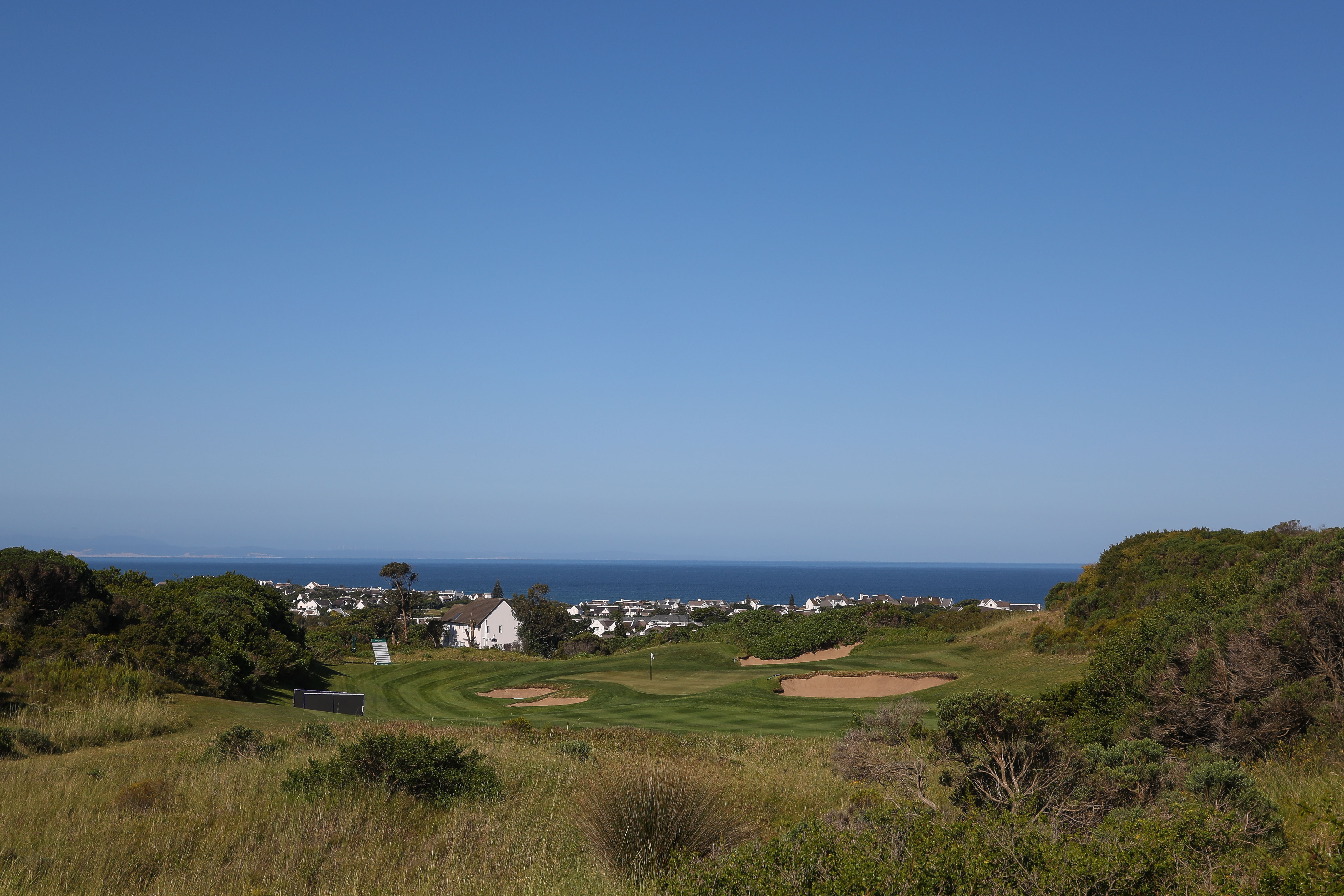
INSIGHT FROM
GROUND LEVEL
Charl Blaauw, estate manager
read more

INSIGHT FROM GROUND LEVEL
Charl Blaauw, estate manager
“When I had the privilege to travel to Scotland, my goal was to see what links courses are all about. We have a links-style course between the dunes, and this makes it so special to me. We have a lot more shrubs and fynbos than St Andrews and the idea is not to imitate other courses, but the goal is rather to create pockets on the course that gives you more of a links feel when you play.
“I love these wispy grasses that move in the wind, it almost gives you the feeling of an ocean of grass as it moves along with the rhythm of the wind, and that to me is unique to links courses. We started putting up a nursery at the back of our maintenance building with the main purpose to propagate and grow veld grasses to transplant on the golf course.
“The vision and dream are now starting to become a reality as the first grasses are being planted on the course. The other reason for the grass is to help combat the loss of sand when we have strong winds, and as we all know, this is often. We have found that the loss of sand out of the bunkers with grasses growing around it is much less than the smooth-edged bunkers.
“I wasn’t here for the build of the course, but I can imagine Jack Nicklaus was very excited by the possibility of creating these bunkers to look so natural. It’s one of the great features of this course.
“On a personal level, I feel that the best thing about playing this course is that, even if I’m playing badly, it’s just not possible to have a bad round. There is always some new view, or a different plant flowering.”
CARL FOURIE/TYRONE WINFIELD/SUNSHINE TOUR/SUPPLIED


